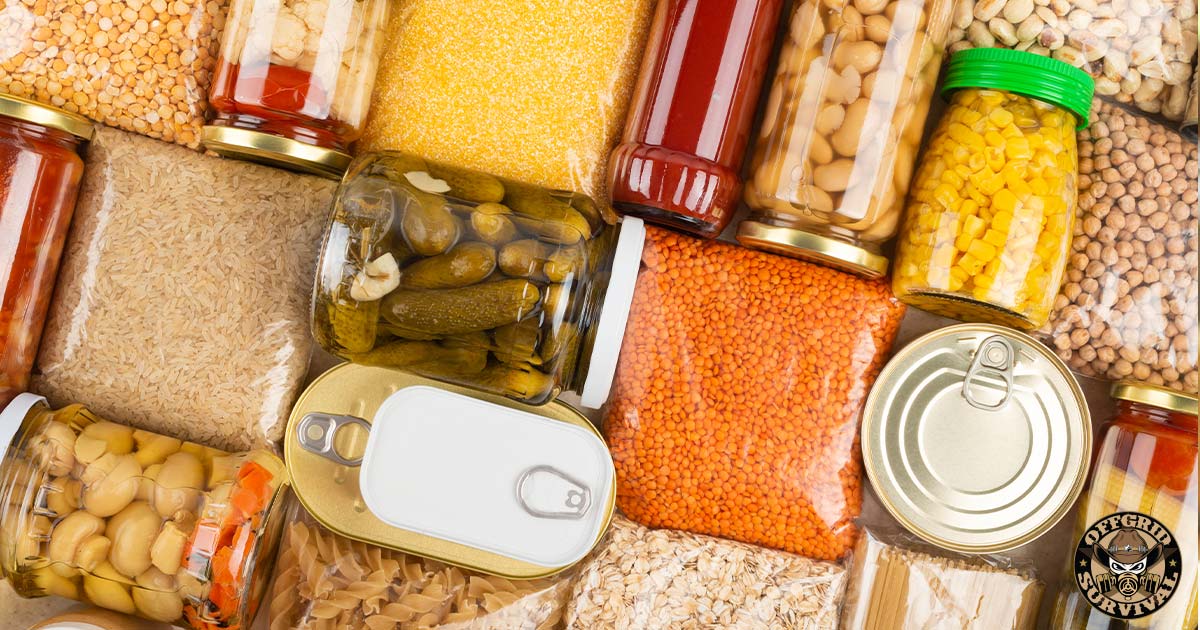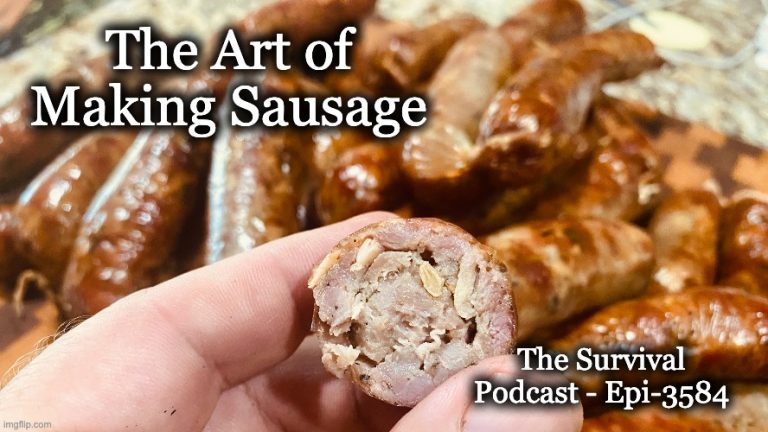When disaster strikes, there’s a pretty good chance your local grocery stores will be stripped bare in a matter of hours. From panicked people trying to stock up on last-minute supplies to those who failed to prepare for even short-term disasters and now find themselves facing the prospect of starving, your local grocery store will look like a battleground in a post-apocalyptic movie.
Most grocery stores have a maximum three-day supply of goods on hand before they run dry. That means even short-term disasters like hurricanes, floods, and earthquakes can cause supply chain problems that will quickly wipe out their inventory. Now throw in a long-term disaster that cuts off supplies for months, and you have a real recipe for disaster.
To be prepared to face an emergency situation where supply chains fail and food deliveries are blocked, you need to invest in a long-term food supply. This supply should be made up of at least six months’ worth of emergency food with a long shelf-life – preferably something that you already eat.
From Supermarket Shelves to Survival Pantry: Building Your Emergency Food Stockpile with Long-Lasting Food From The Grocery Store
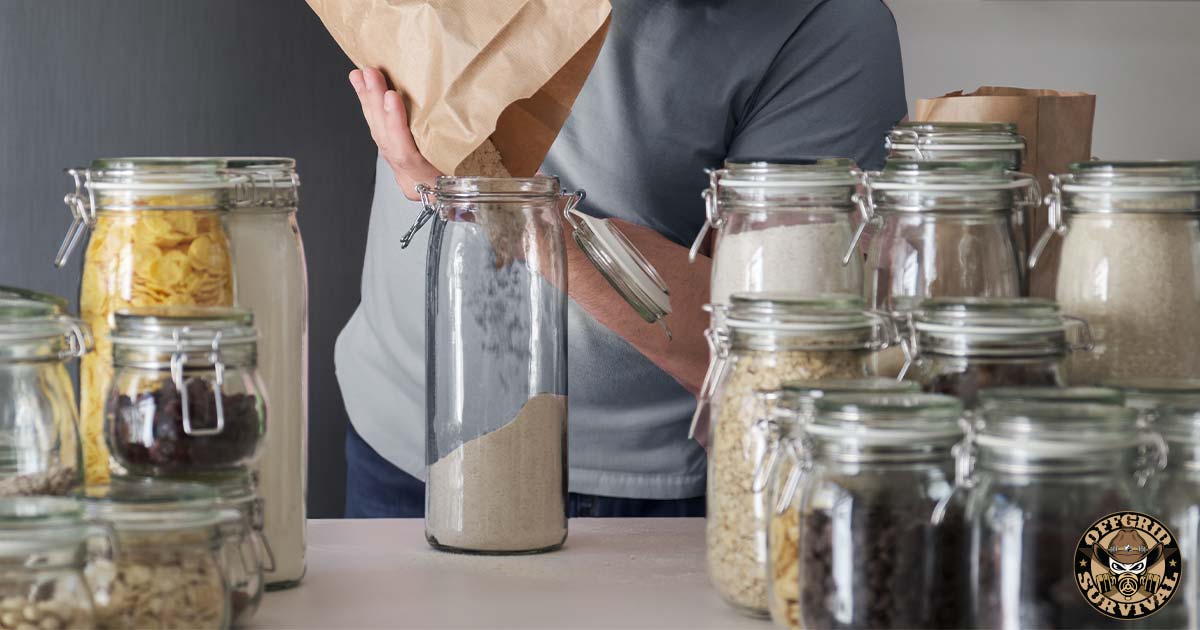
In the face of so many uncertainties, it’s important to ensure you and your loved ones’ survival by stocking an emergency pantry with long-lasting food supplies. While many so-called survival experts try selling commercial ‘survival food’ as the answer, we advocate for building your stockpile with familiar foods you probably already eat – all from your local grocery store or farmer’s markets.
During an emergency situation, the last thing you want to do is eat a bunch of weird survival foods that you’ve never eaten before – from possible allergy concerns to the stuff just downright tasting like crap, now is not the time to start experimenting. On top of that, we don’t like wasting money, so buying foods you already eat and running them on a rotation system that ensures you don’t find yourself years from now with a pantry full of expired food!
With the help of suggestions that have come in from our readers, we have compiled a list of the top food items and emergency supplies that you can buy at the grocery store. The list contains foods with a long shelf-life, items that have multiple uses, and supplies that are great for bartering.
Survival Foods that add flavor & comfort:
Comfort foods can be a huge morale booster during a stressful survival situation, something that needs to be kept in mind when starting to stockpile food. These four things can be stored for over 10 years, and are a great way to add a little bit of flavor to your cooking. If stored properly they will probably last indefinitely.
- Salt: From food preservation to maintaining proper electrolyte balance in the body to enhancing the flavor of your food, salt is an an essential part of your food storage stockpile!
- Sugar: – Brown or White sugars can be stored for quite some time and during emergencies or high-stress situations can help boost energy levels and provide a quick source of fuel. It can also be a huge morale booster when things start getting tough.
- Raw Honey: Honey has an incredibly long shelf life contains numerous vitamins, minerals, and antioxidants. Honey has also been used for centuries as a natural remedy for wound healing due to its antimicrobial properties.
- Alcohol – Whiskey, Vodka, etc.: From bartering to health and medicinal uses, alcohol is one of those items that should be part of any good preparedness stockpile. Check out our article on which liquors are best to stockpile for preparedness.
Base cooking ingredients with a long shelf life
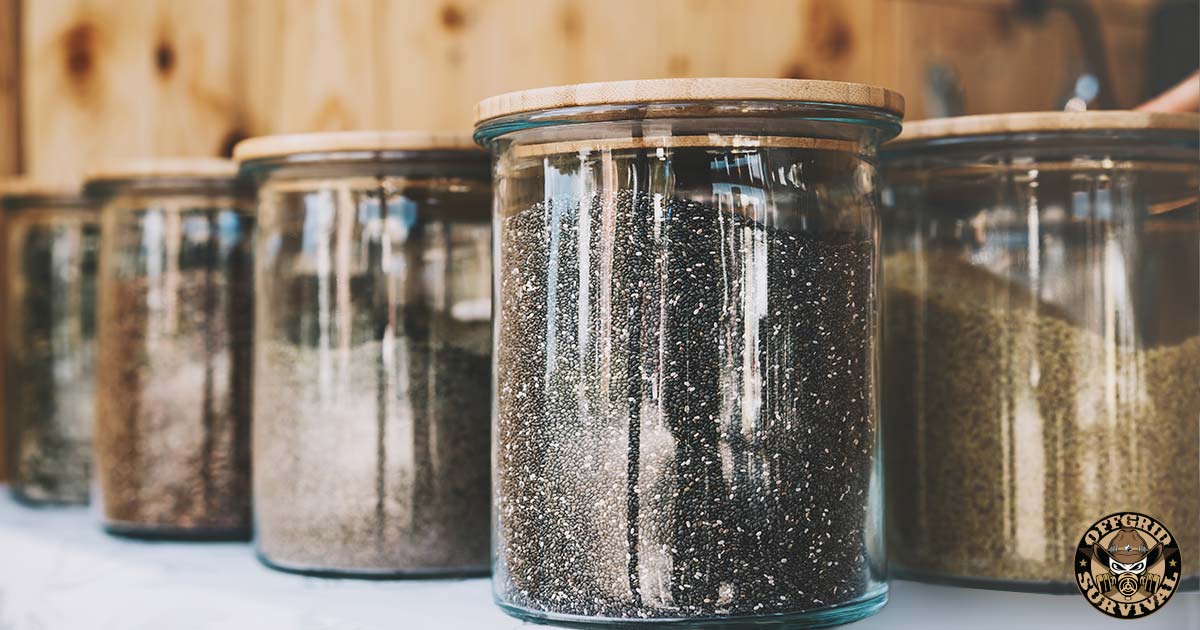
Many people today lack the ability to cook anything from scratch, relying heavily on prepackaged and processed foods. This trend is unhealthy, but it could prove deadly during a long-term survival situation. Learning how to cook from basic ingredients is crucial for successfully preparing for emergencies and ensuring self-sufficiency in food storage.
The following categories of food make up the foundation of most recipes and are all things that store well.
Hard Grains: Stored properly hard grains have a shelf life of around 10 – 12 years.
- Buckwheat
- Dry Corn
- Kamut
- Hard Red Wheat
- Soft White Wheat
- Millet
- Durum wheat
- Spelt
Soft grains: These soft grains will last around 8 years at 70 degrees, sealed without oxygen.
- Barley,
- Oat Groats,
- Quinoa
- Rye
Beans: Sealed and kept away from oxygen the following beans can last for around 8 – 10 years.
- Pinto Beans
- Kidney Beans
- Lentils
- Lima Beans
- Adzuki Beans
- Garbanzo Beans
- Mung Beans
- Black Turtle Beans
- Blackeye Beans
Flours and Mixes and Pastas: 5 – 8 years
- All Purpose Flour
- White Flour
- Whole Wheat Flour
- Cornmeal
- Pasta
- White Rice ( up to 10 years)
Oils: It’s important to include fats in your stockpile. Fats are a concentrated source of energy and are crucial for overall health and well-being.
- Coconut oil – Unrefined, virgin coconut oil has one of the longest shelf lives of any kind of oil. It can last for over 2 years, has numerous health benefits, and is a great item to add to your survival food supply list.
- Clarified butter (Ghee): Clarified butter, also known as ghee, is butter that has been heated to remove moisture and milk solids. The process increases the fats stability and extends its shelf life. Ghee can last for several months to a year when stored in an airtight container in a cool, dark place.
- Olive oil: Extra virgin olive oil has a decent shelf life and can be stored for up to a year or more if kept in a cool, dark location.
For more information on cooking from scratch, check out these articles and books:
What About Buying Canned Goods for your Survival Pantry?
Proper Storage and Shelf Life of Canned Goods
We get a lot of questions on canned goods and how long they can safely be stored. To ensure the quality and safety of canned goods, it’s important to store them correctly and be aware of how long the manufacturer recommends they be stored. And remember, most best-by dates are placed there to protect the manufacturer from lawsuits, The U.S. Department of Agriculture says that most shelf-stable foods are safe indefinitely. In fact, they say canned goods will last for years and that dating is for quality, not safety.
Here are some guidelines to follow when dealing with store-bought canned goods and most shelf-stable foods:
1. Storage: Keep commercially canned foods and other shelf-stable products in a cool, dry location. Avoid placing them above the stove, under the sink, or in areas prone to high humidity or temperature fluctuations, such as a damp garage or basement.
2. Shelf life: The shelf life of canned goods varies depending on the type of food. High-acid foods like tomatoes and fruits maintain their best quality for up to 18 months, while low-acid foods such as meat and vegetables can maintain their original quality for 2 to 5 years. But again, if cans are undamaged (no dents, swelling, or rust) and have been stored properly in a cool, clean, dry environment, they can remain safe indefinitely.
3. Safety precautions: While extremely rare, the production of toxins by Clostridium botulinum bacteria poses the most significant risk when dealing with canned goods. To minimize the risk, make sure your cans are in good condition and show no signs of damage or contamination. If any cans appear compromised (bulges or leaks), it’s best to get rid of them to avoid any potential health hazards.
For more information on canning your own foods at home, check out our article on Canning your own food!
Survival Foods that are great during short-term disasters
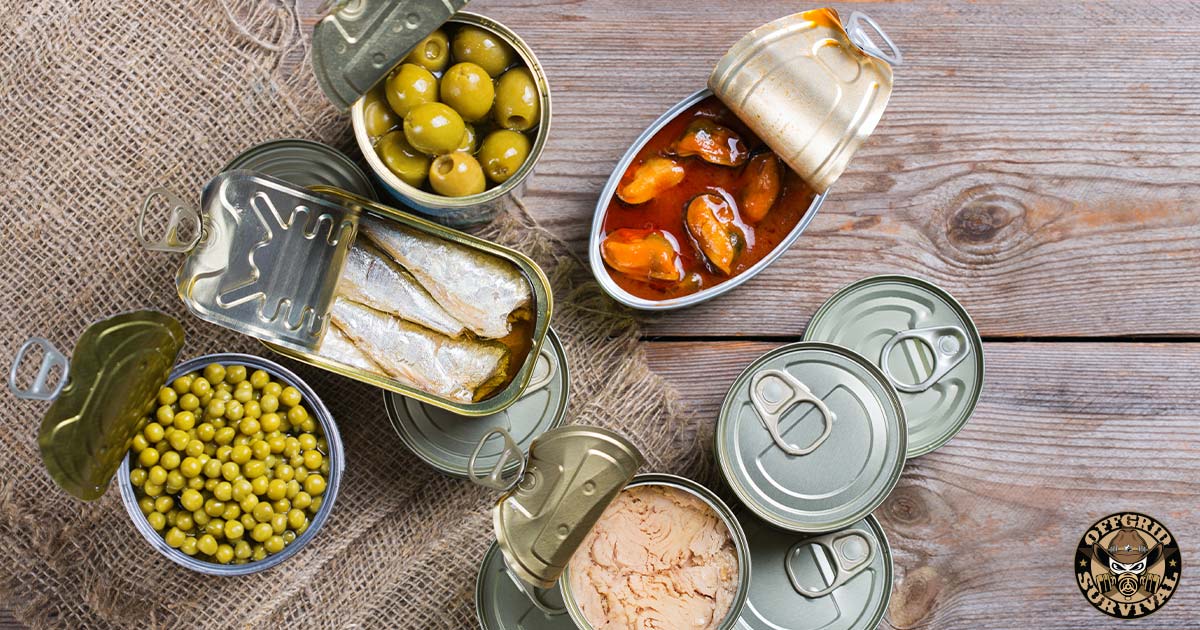
The following items are great for short-term emergencies, and will stay fresh for a long period of time. During most disasters, you’re going to want to have food that requires very little cooking, or can be eaten without any preparation at all. Make sure some of your stockpile includes these types of food.
Other good survival foods: 2 – 5 years of shelf life
- Canned Fish: Tuna, Salmon, Sardines
- Canned Meats: Chicken, Beef, Pork, Spam & Sausages
- Canned Vegetables & Fruits
- Peanut Butter
- Coffee
- Tea
- Ramen Noodles – not the greatest food in the world but they are very cheap so they made the survival food list.
- Hard Candy
- Powdered milk
- Dried herbs and spices
- Canned soups (a variety of flavors)
- Canned pasta sauces
- Canned broth or stock (chicken, beef, or vegetable)
- Crackers or rice cakes
- Dried fruits (raisins, apricots, cranberries)
- Nuts (almonds, walnuts, peanuts)
- Granola bars or energy bars
- Cereal or granola
Items that can be used for more than cooking:
- Apple Cider Vinegar – Cleaning, cooking and has antibiotic properties
- Baking Soda – Cleaning, cooking, etc…
- Honey – Mentioned again for its antibiotic properties and wound healing.
Nonfood items to stock up on at the grocery store:
- Bic Lighters
- Toilet Paper
- Soaps
- Bottled Water
- Multi-vitamins or supplements
- Medicines
- Bandages
- Peroxide
- Lighter fluid
- Canning Supplies
- Charcoal
More Emergency Food Resources
While we always advise the DIY approach to stockpiling food, this way you have the things that you would normally cook and eat and can then rotate them in and out of your normal life, there are some circumstances where commercially made survival food supplies might make sense. Here are some of the top emergency survival foods that can help you quickly bulk up your emergency supplies.







